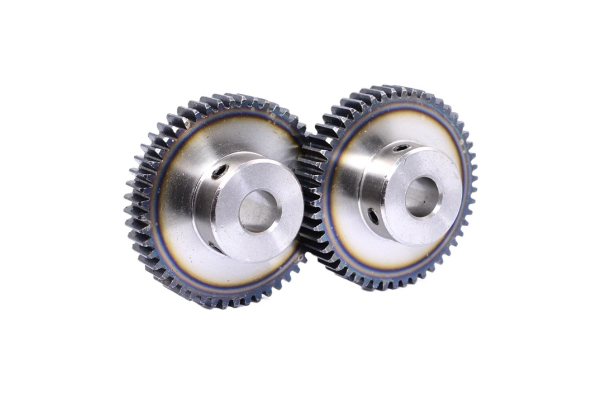
What Does a Smaller Pinion Gear Do?
2024-12-25
In the world of mechanics and engineering, gears play an essential role in transferring motion and power between components. Among these gears, the pinion gear—a small gear that engages with a larger gear, often called a ring gear or a rack—stands out for its unique capabilities in various systems. But what happens when you use a smaller pinion gear? How does it affect performance, speed, torque, and other characteristics? This article delves into the role of a smaller pinion gear and its impact on mechanical systems.
Understanding Gears and Pinion Gears
Gears are rotating machine elements with teeth that transfer torque and alter the speed or direction of motion. A pinion gear is typically the smaller gear in a gear set and is designed to mesh with a larger gear or gear rack. The pinion gear’s size and number of teeth directly influence the mechanical output of the system.
When the size of the pinion gear changes—specifically when it gets smaller—it alters the gear ratio, which significantly affects the system’s behavior.

Gear Ratio and Its Importance
The gear ratio is the relationship between the number of teeth on the pinion gear and the larger gear it interacts with. It is calculated as:
Gear Ratio=Teeth on Larger GearTeeth on Pinion Gear\text{Gear Ratio} = \frac{\text{Teeth on Larger Gear}}{\text{Teeth on Pinion Gear}}
A smaller pinion gear increases the gear ratio, which directly impacts speed and torque. This adjustment has several implications, depending on the application.
Effects of a Smaller Pinion Gear
1. Increased Torque
One of the most notable effects of a smaller pinion gear is an increase in torque. Torque is the rotational force that a system can exert. A higher gear ratio amplifies the torque output because the smaller pinion gear must rotate more times to turn the larger gear.
- Applications:
- Heavy-duty machinery, such as construction vehicles, benefits from increased torque to handle heavy loads.
- Automotive systems, like off-road vehicles, use smaller pinion gears to enhance power for climbing steep inclines or navigating rough terrain.
2. Reduced Speed
While torque increases, the speed at which the larger gear turns decreases. This is because the smaller pinion gear must complete more rotations to drive the larger gear, leading to slower output speeds.
- Applications:
- Systems requiring precise, slow movements, such as robotics or conveyor belts, often use smaller pinion gears to control motion.
- Industrial machines that prioritize power over speed also employ this configuration.
3. Improved Precision
In applications where controlled motion is crucial, a smaller pinion gear can provide better precision. The slower movement and higher torque enable smoother operation and finer control.
- Applications:
- CNC (Computer Numerical Control) machines rely on smaller pinion gears for accurate cutting and shaping.
- Camera stabilizers and precision tools often incorporate smaller pinion gears for meticulous adjustments.
4. Increased Wear on Pinion Gear
Because a smaller pinion gear rotates more frequently than a larger one in the same system, it is subject to more wear over time. The increased rotational frequency leads to faster degradation, especially in high-load or high-speed environments.
- Mitigation:
- Using durable materials and proper lubrication can minimize wear.
- Regular maintenance helps extend the lifespan of the pinion gear.
Trade-Offs of a Smaller Pinion Gear
While a smaller pinion gear offers increased torque and precision, it comes with trade-offs. The reduced speed may not be ideal for applications requiring high-speed output. Additionally, the increased wear and tear may necessitate more frequent replacements, raising maintenance costs.
Common Applications of Smaller Pinion Gears
Smaller pinion gears find widespread use in various industries and systems, including:
- Automobiles: Enhancing torque for vehicles designed to operate in challenging terrains.
- Heavy Machinery: Providing the necessary power for equipment like cranes, bulldozers, and excavators.
- Robotics: Allowing precise control in robotic arms and automated systems.
- Industrial Equipment: Regulating the speed and torque of conveyors, mills, and other machinery.
Conclusion
A smaller pinion gear is a vital component in mechanical systems where torque, precision, and controlled motion are prioritized. By increasing the gear ratio, it amplifies torque while reducing speed, making it an excellent choice for heavy-duty, precision, and low-speed applications. However, its use comes with challenges, such as increased wear and limited speed capabilities, which must be addressed through careful material selection and maintenance.
Understanding how a smaller pinion gear influences a system allows engineers and designers to make informed decisions, optimizing performance for specific tasks. Whether in automotive applications, industrial machinery, or precision tools, the strategic use of a smaller pinion gear can make all the difference in achieving the desired mechanical output.





